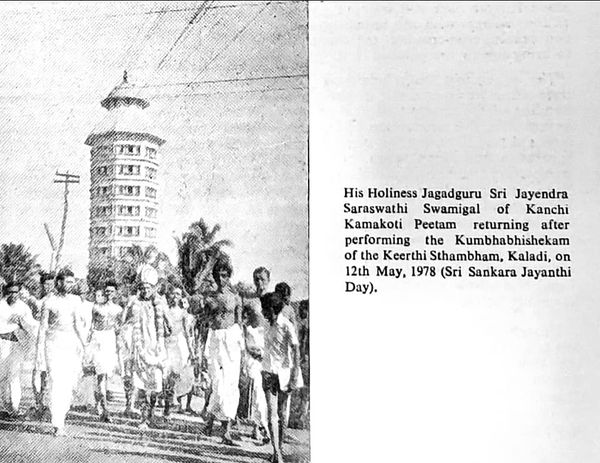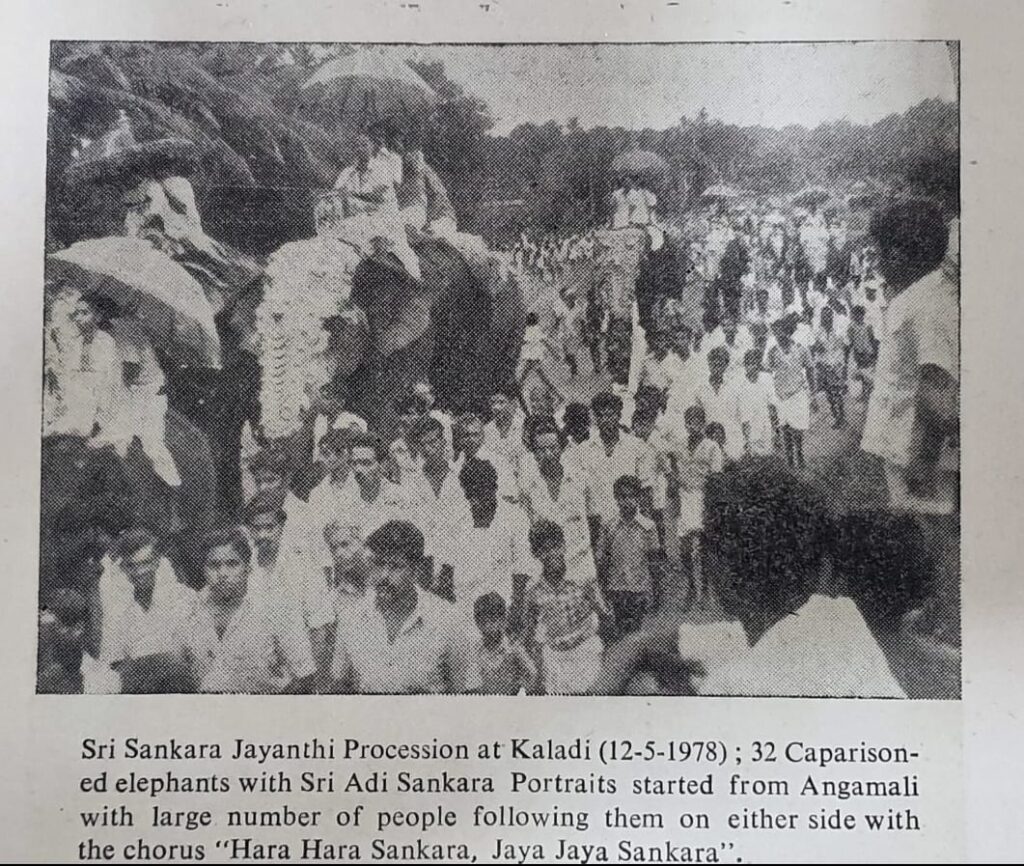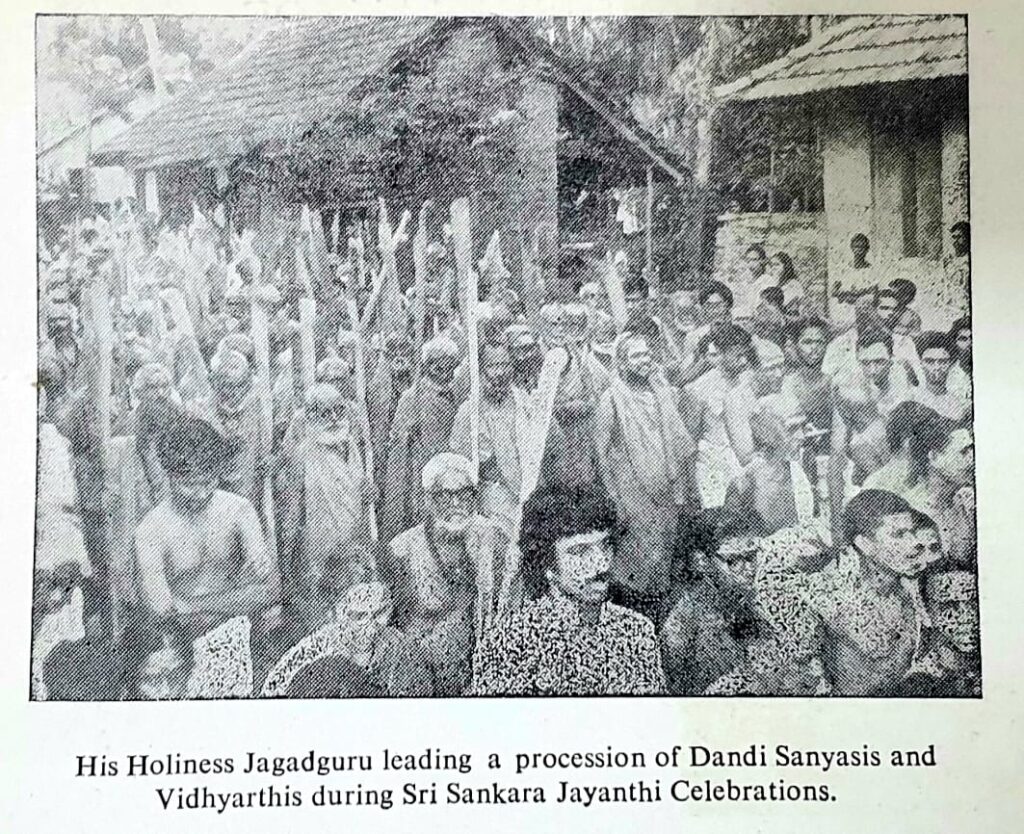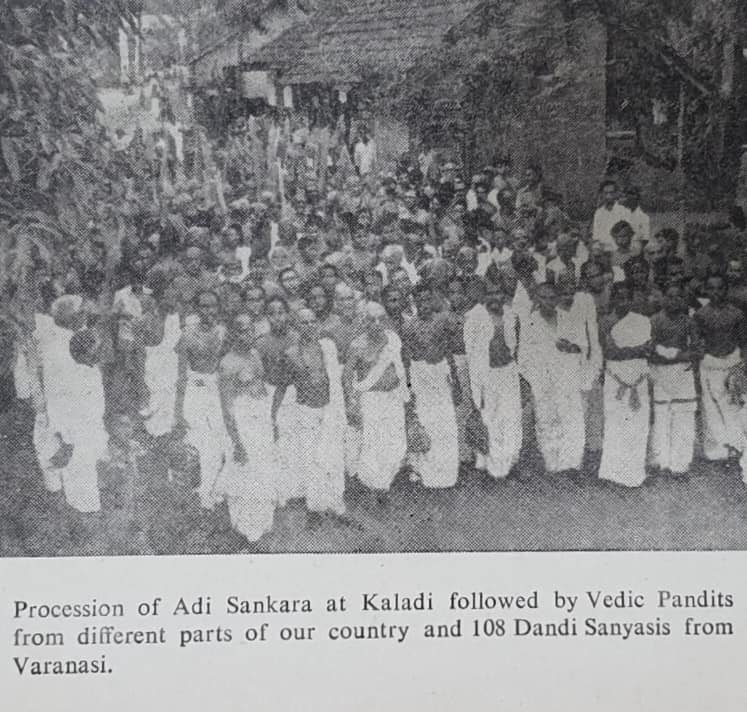SRI KANCHI KAMAKOTI PEETAM SRI SANKARA BHAGAVATPADA KEERTI STHAMBHAM, KALADY, KERALA
The tallest religious monument of Kerala, the Sri Adi Sankara Bhagavadpada Keerti Sthambham , rising to a dizzy height of 152 feet to perpetuate the memory of the Saint, who was born at Kaladi to rise to the pinnacle of glory and to place the resuscitated Hinduism on its solid pedestal, overlooks the sacred spots of the village, associated with Sri Adi Sankaracharya’s life.
From the top of the nine-storey structure an imposing eight-foot statue of the Saint with his four disciples looks down on the sprawling carpet of green beneath, the shadowy valleys of Ghats merging with the margins of the distant horizon and the proud Periyar river still washing the feet of the village with the brimming irrigation canals, criss-crossing the countryside to bring life to the parched land.
The exquisitely built reinforced concrete structure represents a harmonious blending of the concepts of modern architecture with the prescription of the scriptures and traditions and the stipulations of Silpasastra.
The temple architecture traditions of Kerala and Tamil Nadu have also been blended judiciously. The seasoned masons of Kerala and a good number of young workers, men and women, worked with fervour for about two years to give concrete shape to the tower, while the deft hands of the artists from Tamil Nadu drew poems on Sri Sankarachaya’s life in cement for the ornamental work.
Though originally conceived to be 85 feet tall, which incidentally coincided with the 85th year of the Jagadguru of Kanchi Kamakoti Mutt, His Holiness Sri Chandrasekharendra Saraswathi Sankaracharya Swamigal, the architectural and engineering require ments and the aesthetic compulsions finally raised it to over 150 feet, more than double the 60 feet diameter of the basement.
Among the latest in the series of Sri Sankaracharya monuments built under the auspices of the Kanchi Mutt in different parts of India and Nepal, the Kaladi tower costing Rs. 20 lakhs, is one of the tallest so far. The other memorials are at Kanchipuram, Kurukshetra, Haridwar, Puri, Madhyarjunam, Jambukeswaram, Rameswaram, Kanyakumari, Srisailam, Tirupati, Tryambaka, Lakshmanjhula, Badari, Kedara, Khatmandu, Prayaga and Kashi.
Though it can still be called a religious monument, the concept and the execution of the Kaladi tower are essentially secular. Basically, it is only a memorial dedicated to the greatest son Kerala has ever produced. There is nothing of a temple or place of worship in the stupa.
The life story of Sri Sankaracharya and the huge figures of Gods and Goddesses installed on the different floors may still make it look like a temple. But the difference is brought home by the fact that the figures and relief work were all done in cement as distinct from granite, the usual medium for the temples.
It is just another instance of the harmony -a secularist memorial to a religious genius, to whom the country owes a good deal. Its utility too can be very secularist in nature, for it can be developed into a centre of Vedic learning, a place of tourist attraction, a deserving monument to an epoch in history, when the genius of India found expression. A small shrine built beside the stupa could grow into a focus of religious worship.
The marvel of the Saint’s life starts strik ing the visitor as soon as he steps on to the basement of the tower where the ‘Padma paduka’ in marble is installed. Then as you ascend the winding stairs the story of the genius and his ascension to the pinnacle unfolds itself before you in the form of 49 panels of mural relief.
The flight of steps lead you to a lofty world, far above and away from the base to the Sankarapattabhisheka and finally to the imposing figures of the Saint and his disciples, overlooking the world beneath, with Dakshinamurthi in the background as mural relief.
As you go past the floors, the huge figures of the ‘Gitopadesa’, Vinayaka, Muruga, Surya, Mahavishnu, Kamakshi and the colossal Sivalinga, make your climb a pilgrimage, a spiritual and an aesthetic experience. And you never realize that you have climbed 150 feet.
Jagadguru Sri Jayendra Saraswathi Sankaracharya Swamigal of Sri Kanchi Kamakoti Peetam arrived at Kaladi on May 6, 1978, and stayed there till May 18, in connection with the Samprokshanam of the Stupa, which took place on May 12 (Sri Sankara Jayanthi Day).
Sri Sankaracharya stayed at the Manikkamangalam Devi Temple, where the father of Sri Adi Sankara was the chief priest, and performed Sri Sankara Jayanthi Celebrations.
– P. Aravindakshan (1979)




